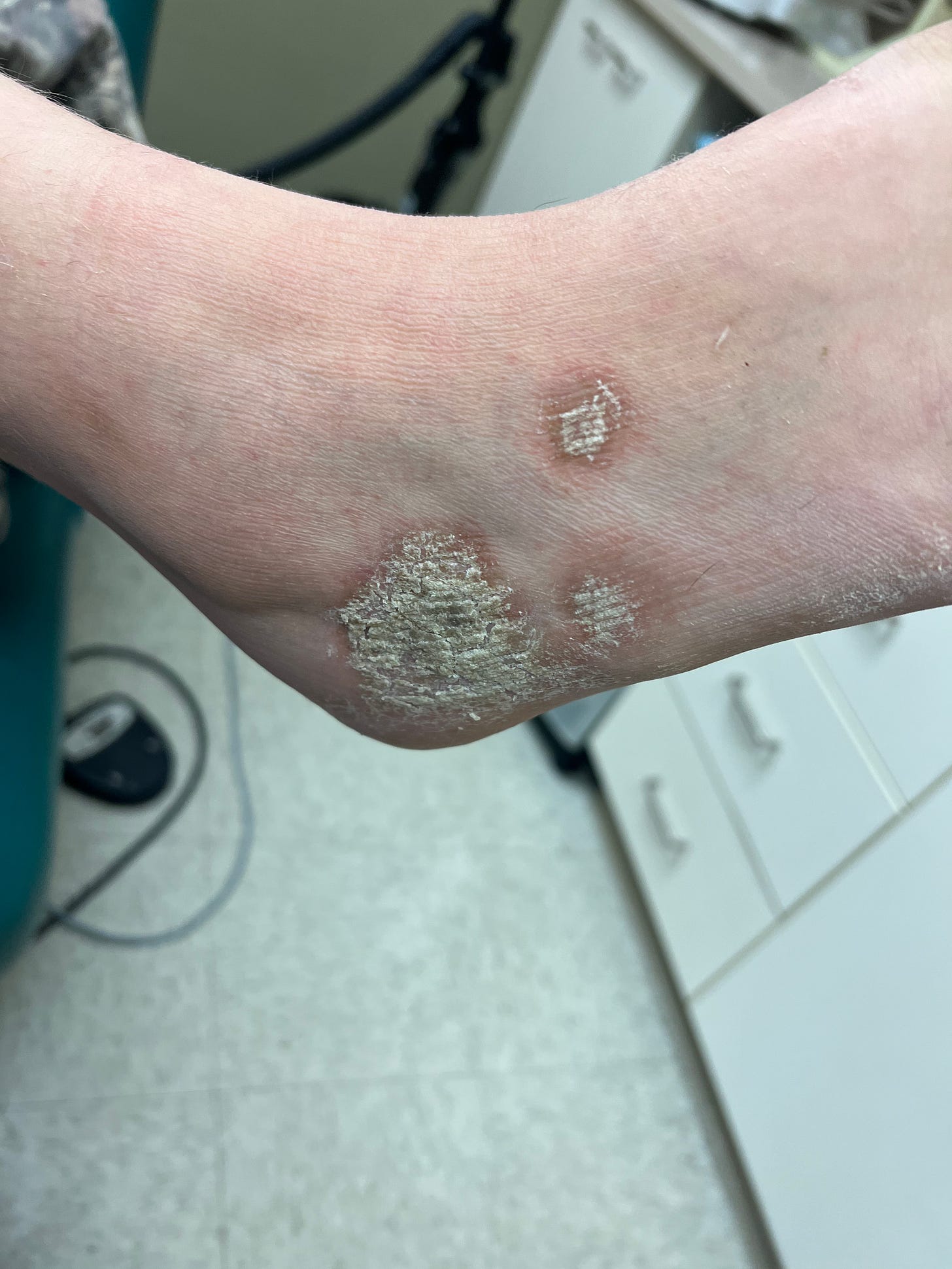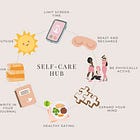The Uninvited Houseguest That Just Won’t Leave
Our Family’s Journey to Healing and Wellness with Eczema
Eczema is the clingy ex of skin conditions—unrelenting, frustrating, and constantly popping up when you least expect it. It’s been a particularly unwelcome part of my family’s life, affecting all three of my kids and me. But my son? He’s had the worst of it. For years, doctors misdiagnosed his eczema as athlete’s foot, leaving us stuck in an endless loop of failed treatments and side-eyeing every sandal season.
Then, last November, he fractured his tibia and had to wear a cast for a month. That lovely, airtight environment turned into an eczema nightmare, and the inflammation got so out of control we had to (reluctantly) use a prescription treatment just to get things under control. Once we had his skin back to some semblance of normalcy, we went back to our preferred arsenal of natural remedies.

The Plot Twist: Mold Was the Real Villain
Because life loves to throw curveballs, we later discovered that mold exposure in our home was a major eczema trigger. Mold is like that toxic friend who makes everything worse—fatigue, allergies, brain fog, and, you guessed it, eczema. So, we embarked on a grand mission to detox both our home and our bodies.
Step 1: Test Your Home for Mold
After I was diagnosed with Chronic Inflammatory Response Syndrome (CIRS)—which sounds as fun as it is—we suspected mold was playing a bigger role in our eczema issues. So, we tested different areas of our home, and surprise! Our house was basically a mold breeding ground. Fun times.
Here’s how we tackled it:
Remediation – We got rid of visible mold, tossed anything beyond saving, and set up air purifiers to capture mold spores and VOCs. If your house is basically the Swamp Thing’s vacation home, you might need professionals.
Air Cleaning Bomb – We used a non-toxic mold bomb from Superstratum to zap airborne spores. (If only there were one for toxic people, too.)
Decluttering – Less clutter = fewer hiding spots for mold and dust. Plus, minimalism is trendy. Win-win.
Deep Cleaning – We scrubbed every surface—walls, floors, ceilings, cabinets, furniture. Even the dog probably got suspicious when we started eyeing him with a scrub brush.
Winter in Northern Wisconsin made this extra fun (read: impossible to air out the house properly), but we powered through. The result? A significantly healthier home, minus the unwanted fungal roommates.
Pro Tip: Deep Clean Your Washer (It’s Nastier Than You Think)
Before diving into loads of laundry, I had to face the horror that is the front-load washer gasket. If you’ve never checked yours, brace yourself—it’s like a petri dish in there.
Wipe down the gasket with vinegar or a non-toxic cleaner.
Add washing soda to the drum, run a hot cycle, then pour vinegar into the bleach and fabric softener compartments for a deep clean.
Leave the door open afterward to air it out, unless you enjoy the smell of musty socks.
Step 2: Detox Your Body (Because Mold Doesn’t Just Attack Your House)
Healing eczema isn’t just about slathering on creams—it’s an inside job, too. Here’s what worked for us:
Whole Foods Diet – We ditched grains, sugar, and cut back on dairy. If it came in a box with cartoon characters on it, we weren’t eating it.
Hydration – Because glowing skin isn’t happening if you’re running on caffeine and vibes alone.
Sweat Therapy – Exercise, sauna therapy—anything to help sweat out toxins. Bonus: It works for colds, flu, and bad moods, too.
The Not-So-Fun Part: Detox Symptoms
Heads up—detoxing can get ugly before it gets better. As your body pushes out mycotoxins, you might feel worse before you feel amazing. Think of it as your body taking out the trash—sometimes the garbage bag rips, but once it’s gone, you’ll feel brand new.
Step 3: Manage Eczema Naturally (Because We’re in It for the Long Haul)
While healing, we relied on these go-to solutions to keep eczema in check:
Glow Butter – My homemade moisturizer keeps our skin happy. (You can grab the recipe below.)
Non-Toxic Living – Swapped out chemical-laden cleaning products because why add more toxins to the mix?
Education Over Restriction – I don’t force my kids into strict diets, but I do teach them how food impacts their bodies. If they go rogue with cake and candy, they know what’s coming—flare-ups, fatigue, and the realization that Mom was right (again).
Why Low-Carb and Ketogenic Diets Help
Through trial and error (and lots of label reading), we found that low-carb and ketogenic diets are eczema game-changers. Here’s why:
Less inflammation = fewer flare-ups.
Balanced blood sugar = fewer crazy skin reactions.
Happy gut bacteria = happy skin.
Also, ADHD symptoms improved, which was an unexpected (but very welcome) bonus. Apparently, blood sugar swings are not a vibe for focus and mood. Who knew? (Oh, right—science.)
Hope for the Future
Do we eat perfectly all the time? Absolutely not. Do my kids sometimes inhale cake like they’re training for a carb-loading marathon? Sure. But they also recognize when their bodies don’t feel great afterward. Progress, not perfection.
Eczema may be stubborn, but so am I. By tackling both environmental and internal factors, we’ve seen massive improvements. If you’re struggling with eczema, mold, or just want to cut toxins from your life, know that healing is possible.
Got questions? Want more info? Let’s chat—because no one should have to suffer through this skin nonsense alone.


